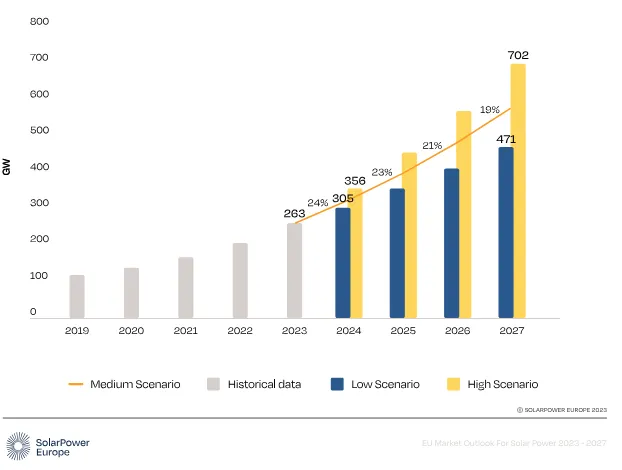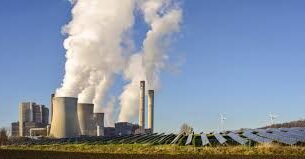In 2025, the European Union is set to add a record 89 gigawatts (GW) of new renewable energy capacity. This would include approximately 70 GW of solar power and 19 GW of wind energy, significantly up from 65.5 GW of solar and 12.9 GW of wind installed in 2024.
 Why This Matters
Why This Matters
- This growth is seen as essential to meet the EU’s climate targets and reduce dependency on Russian gas by the 2027 phase-out deadline.
- The boost in renewable deployment is critical to accelerating the energy transition and securing long-term energy resilience.
 Industry Concerns: Clouds on the Horizon
Industry Concerns: Clouds on the Horizon
Despite ambitious targets, key challenges threaten the rollout:
- Prolonged permitting delays are slowing down project approvals across several countries.
- Cuts in incentives—such as reduced rooftop solar feed-in tariffs in France—are weakening growth projections.
- Industry association SolarPower Europe has warned that downward revisions to the 2025 forecast may be necessary, citing the withdrawal of support in major markets like France
Meanwhile, developers such as Orsted have raised alarms about escalating project costs and supply chain disruptions. Industry group WindEurope projects a 35% rise in wind capacity to 17.4 GW this year, but warns that resource and regulatory hurdles could slow progress .
 Summary Table
Summary Table
Aspect | 2025 Forecast/Detail |
Total new renewables | 89 GW |
Solar | 70 GW |
Wind | 19 GW |
Key challenges | Permitting delays, subsidy cuts, rising costs |
Forecast risks | Potential downward revision by industry groups |




